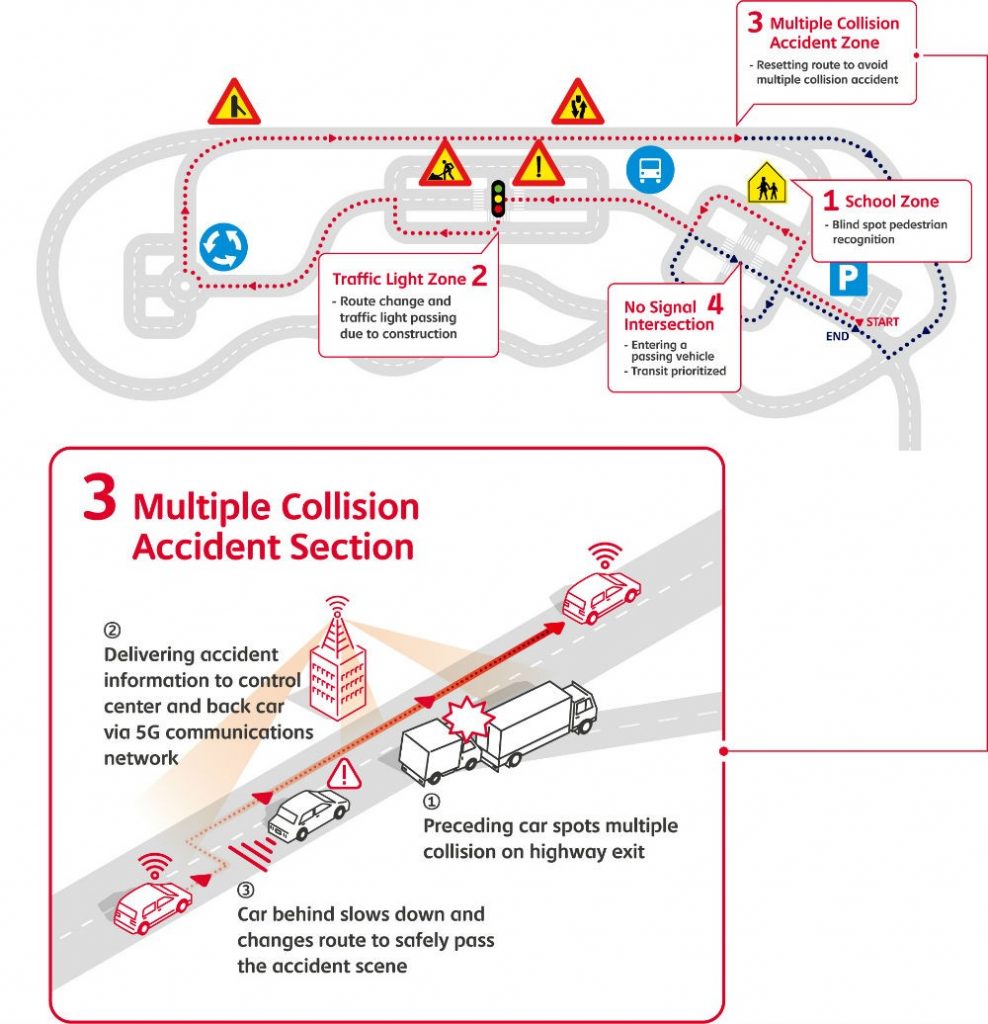On a regular weekday, some time in the future, you’ll be heading to work like everyone else, comfortably chauffeured in a self-driving car. As you approach a school zone, your car and the cars next to you heed the speed limit but stop sharply as a child rushes out into the street.
That’s what happened during tests at K-City, testing grounds for self-driving cars in Hwaseong, South Korea. The recent experiment from SK telecom and the Korean Transportation Safety Authority (TS) ran two 5G self-driving cars successfully through what they’re calling “cooperative driving,” where smart-self driving cars constantly ping each other with updated traffic information.

And while the cars in the tests were on a closed track and the “child” running out into the street was a life-size dummy, the experiment proves that the ultra-low-latency of less than 1ms of response time can handle everyday traffic situations. The incessant chatter — the car communicated more than 100 times a second using 5G network with the control center and with another vehicle — means that vehicles reroute for construction sites, gauge the right speed for freeway on-ramps and determine how best to merge traffic after an accident closes a lane.
An earlier test below shows the car whizzing at over 100 mph to demonstrate potential point-to-point data transmission speeds.
Putting software-defined networking in the driver’s seat
SK telecom is the largest wireless provider in South Korea with a 50 percent market share. The company has been at the forefront of developing and commercializing advanced wireless technology — for example, it was the first to commercialize CDMA technology way back in 1990. And while 5G is said to have had its “coming out party” with a number of firms including SK telecom at the Winter Olympics, SKT is once again ahead of the curve.
Their team has been pioneering the network slicing and virtualization key to make 5G run smoothly. Back in 2017, they released TACO (T-All Container OpenStack) for SKT’s 5G infrastructure. The team has also been developing software-defined networking (SDN) based network virtualization solution (SONA) for TACO. SONA uses VxLAN to provide fully independent virtual networks to 5G services and supports multiple gateways to provide multiple paths to gateways for its performance.
SONA also supports containers (Docker Swarm and Kubernetes) and allows communication between containers and VMs by controlling their flows using an SDN controller. (This video using Amazon’s Alexa to deploy a container in just a few minutes was a crowd pleaser.) The connections among containers and VMs are essential to 5G infrastructure where some of VNFs have micro-service architecture utilizing containers to improve its agility.
For more details on the carrier-grade SDN-based OpenStack networking solution, check out this 30-minute session by SK telecom’s Daniel Park and Sangho Shin at the OpenStack Summit Sydney.
Cover Photo // CC BY NC
- Exploring the Open Infrastructure Blueprint: Huawei Dual Engine - September 25, 2024
- Open Infrastructure Blueprint: Atmosphere Deep Dive - September 18, 2024
- Datacomm’s Success Story: Launching A New Data Center Seamlessly With FishOS - September 12, 2024

)







